Calibrachoa ‘Million Bells’ – Are They Worth It For One Season Of Growth?
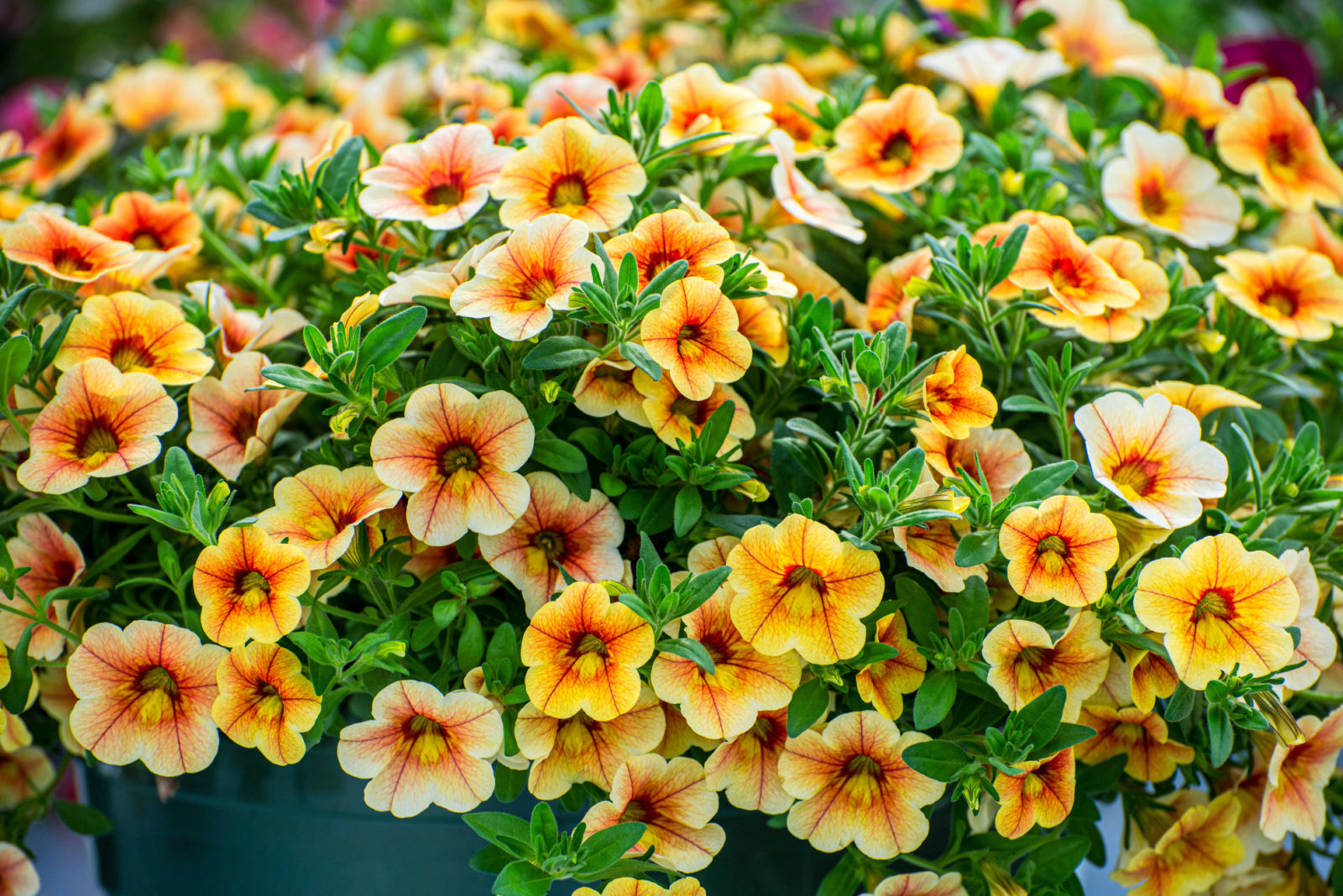
ANNUALS > CALIBRACHOA

Elizabeth is a Permaculture Garden Designer, Sustainability Consultant and Professional Writer, working as an advocate for positive change. She graduated from the University of St. Andrews with an MA in English and Philosophy and obtained a Diploma in Applied Permaculture Design from the Permaculture Association.
Reviewed By ROY NICOL

Roy is a Professional Gardener and Horticultural Consultant, specialising in large garden year-round maintenance and garden development. He is an RHS Master of Horticulture and uses his research in the application of no-dig methods in ornamental garden settings. Roy has been a Professional Gardener for more than six years and is a member of the Chartered Institute of Horticulture, Professional Gardener's Guild and Association of Professional Landscapers (Professional Gardener).
CALIBRACHOA GUIDES
Calibrachoa is a popular half-hardy bedding plant for a summer container garden.
Its pretty bell-shaped flowers look like mini petunias and come in a wide range of colours.
Overview
| Botanical Name | Calibrachoa |
| Common Name(s) | Million Bells |
| Plant Type | Evergreen Perennial |
| Native Area | South & Central America |
| Hardiness Rating | H2 |
| Foliage | Evergreen |
| Flowers | Petunia-like, 2-3cm in diameter in a range of hues |
| When To Plant | May-June |
Sunlight
Preferred
Full Sun
Exposure
Sheltered
Size
Height
0.1 – 0.5M
Spread
0.1 – 0.5M
Bloom Time
Summer
Soil
Preferred
Most fertile soils
Moisture
Moist but well-drained
pH
Any
Calibrachoas, you might be surprised to learn, are actually in the same plant family as potatoes, tomatoes and peppers (Solanaceae).1Calibrachoa x hybrida. (n.d.). North Carolina Extension Gardener Plant Toolbox. Retrieved March 13, 2023, from https://plants.ces.ncsu.edu/plants/calibrachoa-x-hybrida/
They are, in their native South American range, short-lived perennials or subshrubs, but they are treated as annuals in the UK and other temperate climate gardens.2Calibrachoa. (n.d.). Kew Royal Botanic Gardens. Retrieved March 13, 2023, from https://powo.science.kew.org/taxon/urn:lsid:ipni.org:names:38309-1
The Million Bells series is a collection of hybrid calibrachoa commonly cultivated as garden plants.

Most frequently, they are used as summer bedding plants in hanging baskets or pots, as they have a trailing habit.
They typically provide an excellent flowering display between early summer to early autumn, before temperatures fall and the plants are simply added to your composting system.
Reasons To Avoid Planting
For sustainable, eco-friendly gardeners like me, plants like this one are somewhat problematic.
While many love these pretty flowers and the way in which they trail over the edges of containers and hanging baskets, they pose a problem for those who want to garden in a more ethical way.
The problem is that these are hybrids, which cannot be grown from seed, and you cannot propagate these plants yourself at home because most are trademarked and it is technically illegal.3Get plant breeders’ rights for your new variety. (2023, January 5). GOV.UK. Retrieved March 13, 2023, from https://www.gov.uk/guidance/plant-breeders-rights

Plug plants or pot-grown plants are available relatively inexpensively from garden centres, but most if not all come in plastic pots, and most come in peat-based compost – things we should all be trying to avoid.
I personally would not purchase these because I don’t think the true cost (to people and planet) is worth it for just one season of growth.
I would always try to go for options which I can grow from seed, or propagate myself for future years – but of course, this is a personal choice.
How To Grow
As mentioned above, Calibrachoa hybrids cannot be grown from seed.
If you wish to grow these plants then you must either pick up plug plants in the early spring or somewhat larger plants in late spring or early summer.
Planting
Plant out calibrachoa once all risk of frost has well and truly passed in your area.
These are tender plants which cannot cope with temperatures below 1-5°C.
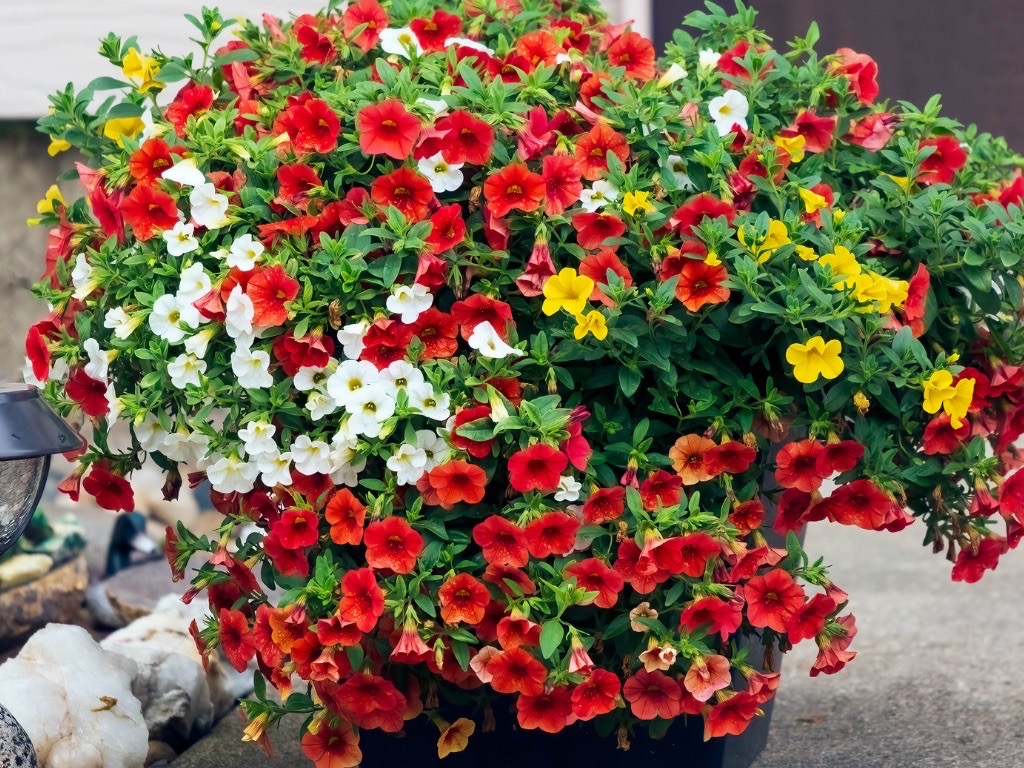
Plug plants are the most affordable option, but remember that plug plants purchased in early spring must be potted up and grown in a frost-free environment before they are hardened off and planted out from late May.
You will need to make sure you have a suitable spot in which to do this.
Ongoing Plant Care
Million bells may look great, but it is important to understand that though this series is bred to be better for UK growing, and can cope with poor summer weather, it is still quite fussy about exactly how and where it will grow and does require some conscientious care.
Aspect
Million Bells must be positioned in a sheltered spot in full sun.
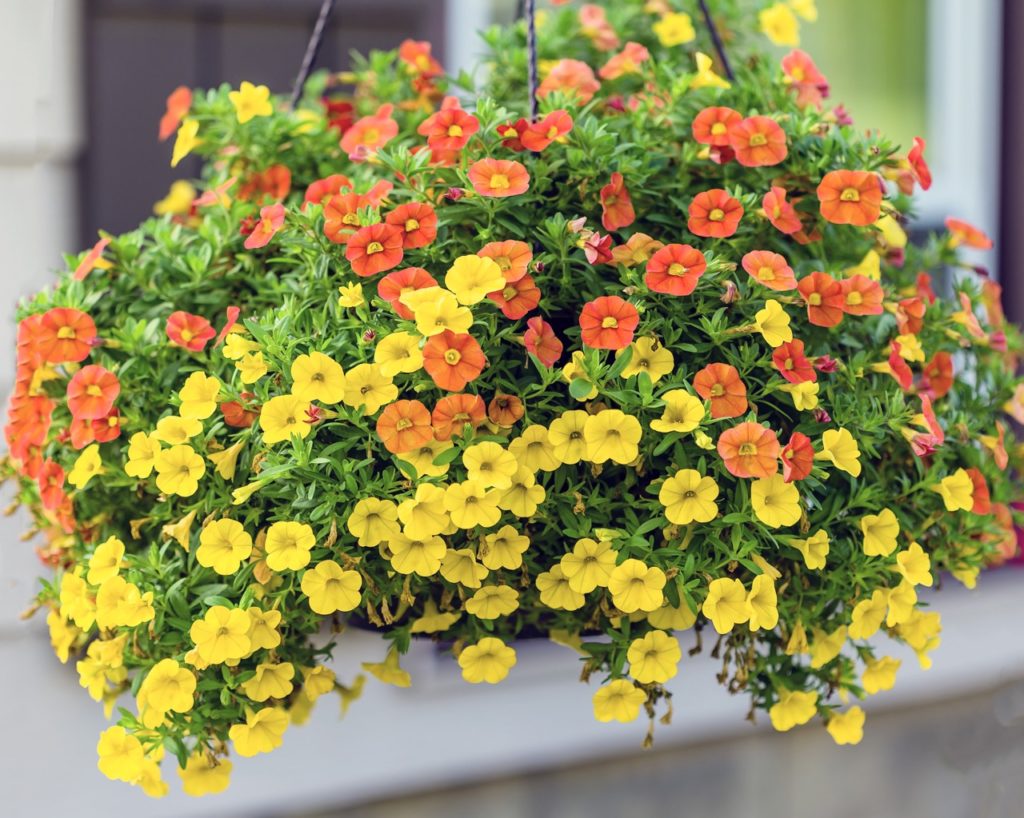
A hanging basket or container against a sunny, south-facing wall is ideal.
Soil Requirements
These plants can be planted in any multipurpose, peat-free compost, or in any free-draining yet moist growing medium or soil.
You can grow these in a bed or border, but they are typically grown in containers or hanging baskets because they look good trailing over the sides.
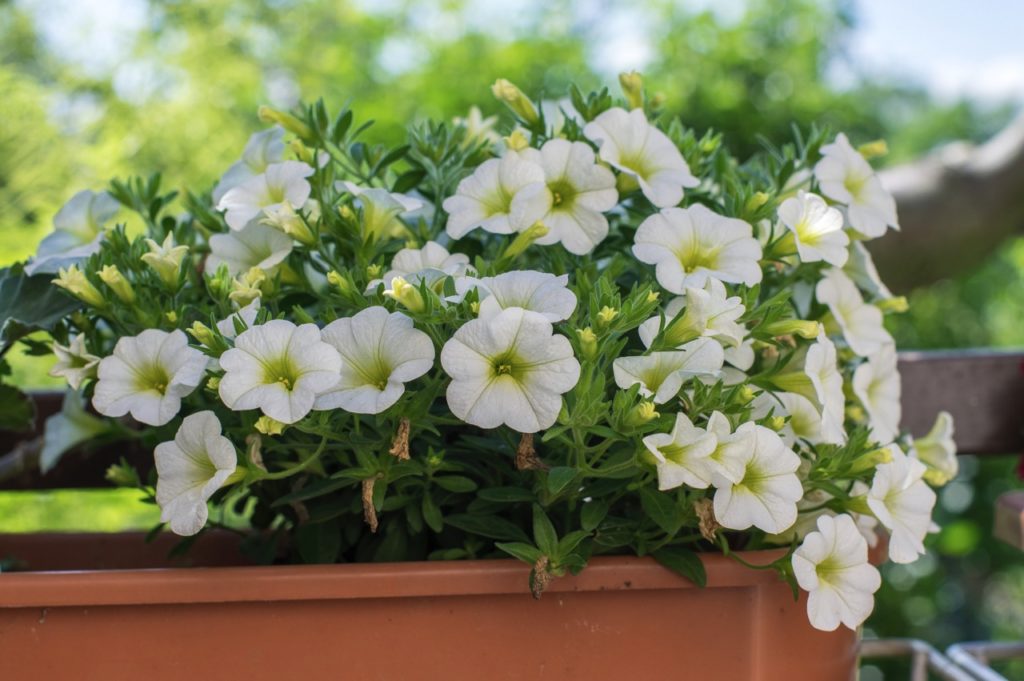
Note that the containers that you choose should be moderately good at retaining moisture, but must allow excess water to drain away freely.
Make sure there are good drainage holes and use pot feet to raise containers up off the ground.
Watering
Calibrachoa should be watered regularly over the summer months.
Although these plants will not tolerate waterlogged conditions, they will also suffer if allowed to dry out.
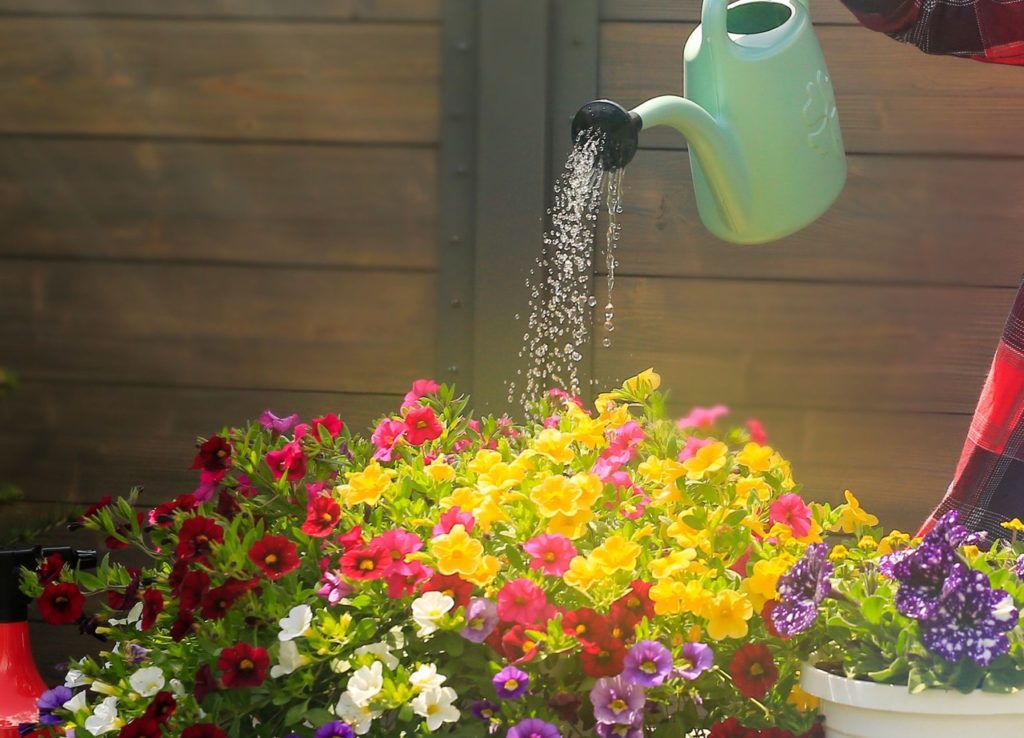
Keep the growing medium moist and remember that this could involve watering every day, perhaps even more often if the weather is very warm and dry.
Fertilising
Feed these plants every couple of weeks from mid-summer with a high-potassium organic liquid plant feed like comfrey tea or seaweed extract.
Pruning
No deadheading is required as these plants drop their spent flowers on their own, but you may wish to pinch back each stem, nipping off the growing tip, as this can prevent legginess and encourage the plants to bush out and produce more flowers.
Overwintering
These are single-season plants which are only used for summer bedding and are composted once the weather turns in autumn.
Propagating
As mentioned above, while Million bells could technically be propagated by means of softwood cuttings, this is technically illegal since the plants are trademarked.
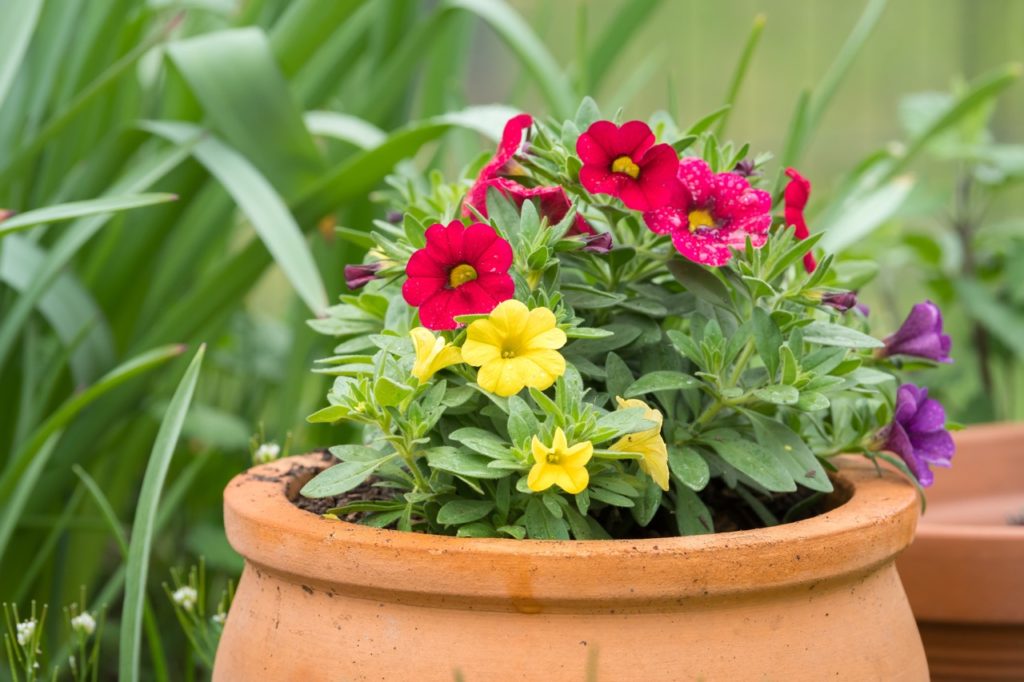
New plants must be purchased each year if you want to continue to grow these flowers in your garden in successive years.
Common Issues
Calibrachoas can be rather fussy plants when it comes to temperature, sunlight and water.
They will not flower well if they are grown in an area with too much shade and will die in cold temperatures and can wilt when the temperatures are very high.
Flowering will also be poor if you have not watered consistently, and wilting can be due to a lack of water or can be a sign of overwatering, which may have led to root rot.
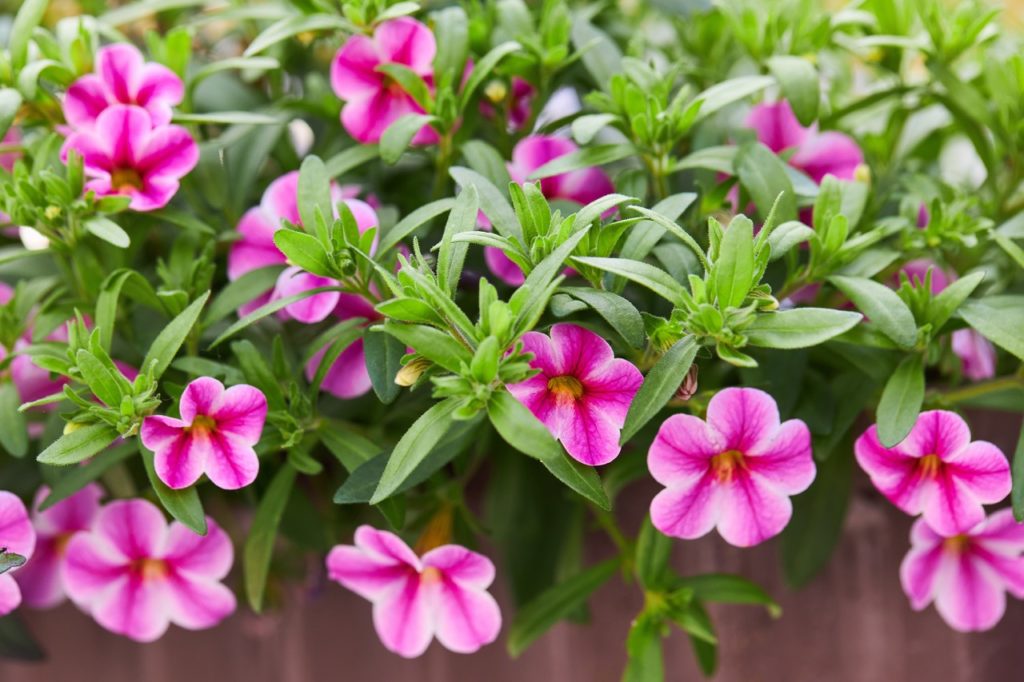
Grey mould is another common issue and can be a sign that you have overwatered.
Yellowing leaves can be a sign of a nutrient deficiency and may mean that extra feeding is required.
Calibrachoas can also be bothered by pests like aphids, slugs and snails, though these can usually be controlled organically by attracting ladybirds, hedgehogs, birds and other beneficial predatory wildlife to your garden.
“In my experience, other organic methods, such as treating the compost in pots with nematodes and applying copper tape around the edge of pots, can be very effective at deterring slugs and snails,” says Roy Nicol, a Professional Horticulturist with over 10 years of experience.
FAQs
How Do You Keep Million Bells Blooming?
Make sure it gets plenty of sun, the right temperature, water and regular feeding, and Million Bells should keep blooming through the summer until early autumn.
Does Calibrachoa Come Back Every Year?
No, calibrachoa is perennial in its native range, but it will not return for a second season in the UK, and cannot usually be overwintered successfully in our climate without expensive investment.
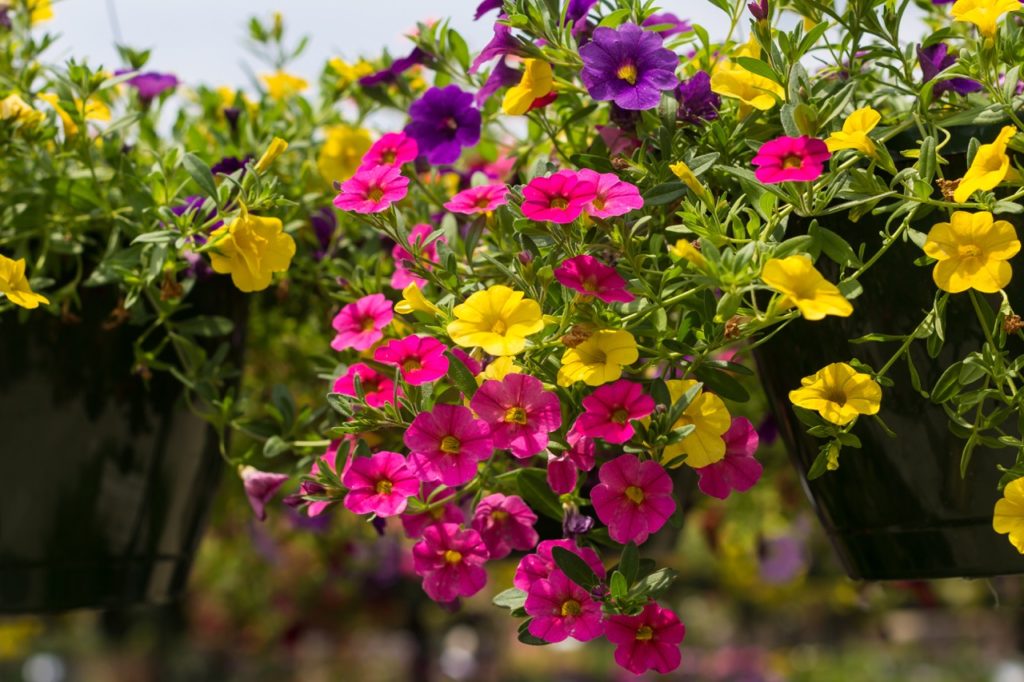
It grows for a single summer and is then composted.
How Do You Keep Calibrachoa From Getting Leggy?
Making sure that your plant gets at least 6-8 hours of sunlight a day and pinching off the growing tips to encourage bushiness should stop your plant from becoming leggy.
References
- 1Calibrachoa x hybrida. (n.d.). North Carolina Extension Gardener Plant Toolbox. Retrieved March 13, 2023, from https://plants.ces.ncsu.edu/plants/calibrachoa-x-hybrida/
- 2Calibrachoa. (n.d.). Kew Royal Botanic Gardens. Retrieved March 13, 2023, from https://powo.science.kew.org/taxon/urn:lsid:ipni.org:names:38309-1
- 3Get plant breeders’ rights for your new variety. (2023, January 5). GOV.UK. Retrieved March 13, 2023, from https://www.gov.uk/guidance/plant-breeders-rights
